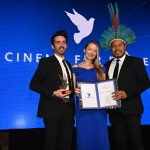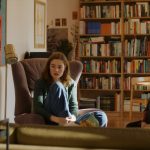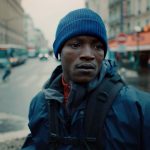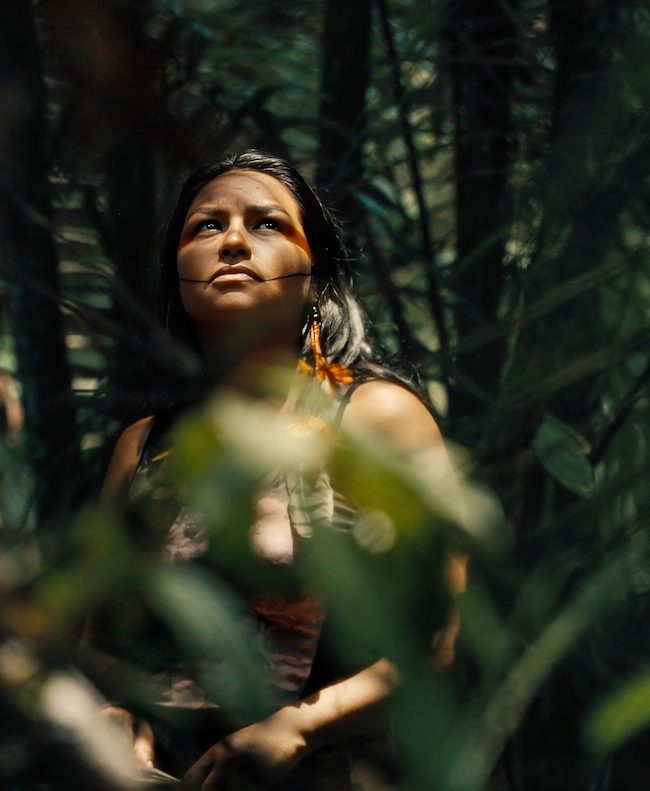A Conversation with Chelsea Greene & Rob Grobman (WE ARE GUARDIANS)
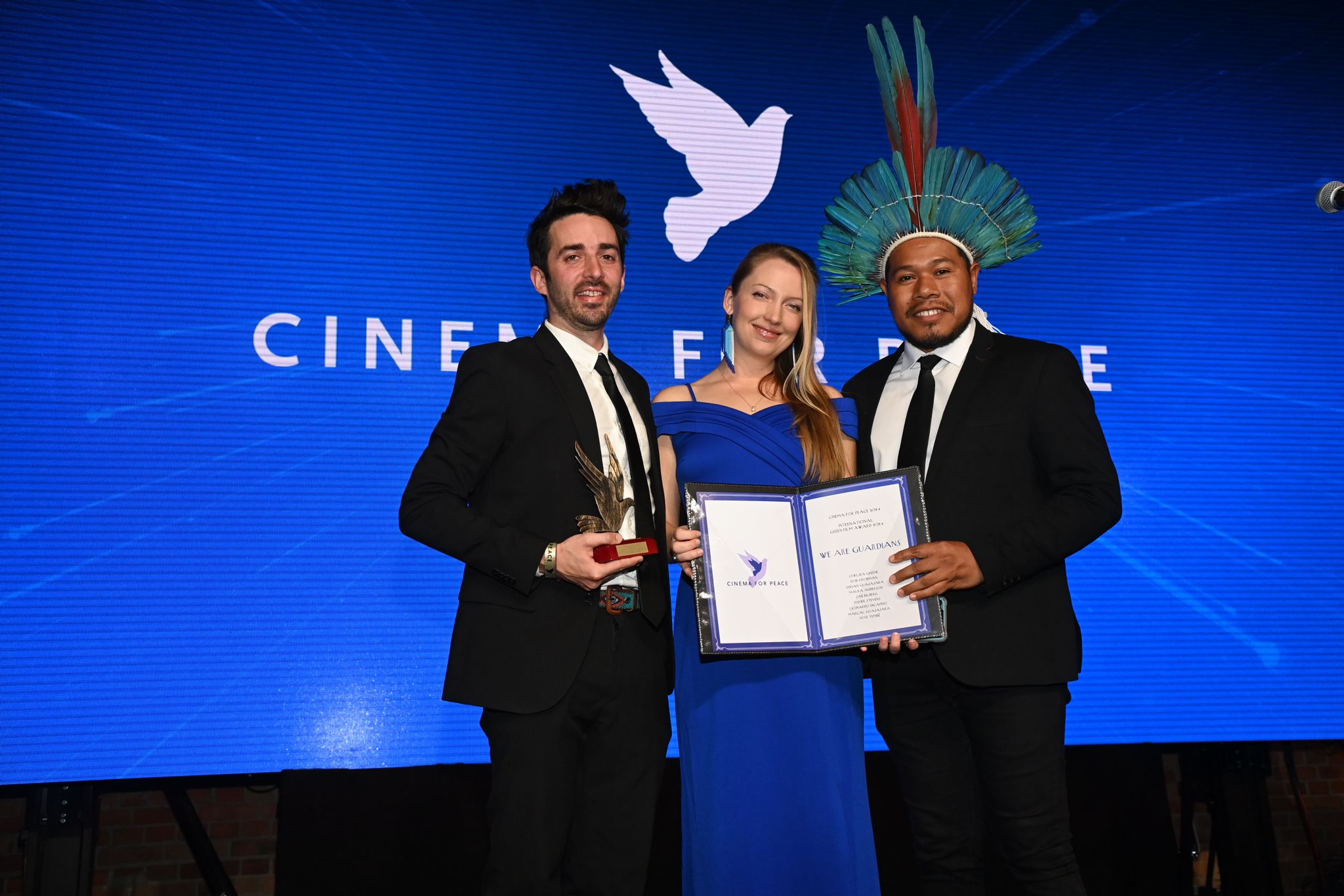
Just one year ago, more than 44.2 million acres of the Amazon Rainforest were burned in a devastating forest fire. The destruction was overwhelming, but unfortunately, was not the first tragedy the rainforest has faced. Since the 1970s, almost 20% of the Amazon Rainforest has been destroyed. During the leadership of Brazilian president Jair Bolsonaro, filmmakers Chelsea Greene, Rob Grobman, and Edivan Guajajara sought to expose the deforestation industry his administration promoted.
Their film, We Are Guardians is a tense yet tenderhearted glimpse into the degradation of the Amazon Rainforest and the communities risking their lives to save it. Although the film was created from an urgent fearfulness, it is coursing with a quiet sense of hope as we follow protagonists Puyr Tembé and Marçal Gajajara, Indigenous activists and environmental warriors risking their lives to save not just their homes, but the world.
In early 2023, after President Luiz Inácio Lula da Silva took office, Puyr was appointed the Minister of Indigenous Peoples for the State of Pará. For years, she has been an active speaker and advocate of Brazil’s Indigenous communities and the Amazon, organizing rallies and campaigning for their rights across Brazil and the world. In the Alto Rio Guama territory of Pará, Puyr is also a member of the Forest Guardians, an organized force conducting surveillance missions to protect indigenous territories from illegal mining, logging, and land grabbing. In his home village of Zutiwa in the Arariboia Indigenous Territory, Marçal holds the position of Regional Coordinator of the Forest Guardians. Despite the danger at hand, with illegal loggers threatening him and his family, Marçal and Puyr’s unyielding devotion for the forest fuels their fight.
We Are Guardians is impassioned and tormented at the corruption and greed fueling this destruction, but never angry. The film walks an impressive tightrope of perspective, its direction clearly driven by the filmmakers’ exasperation while holding onto an emotional sympathy, even for the film’s “antagonists.”
The film premiered on June 6th (2025) in Los Angeles, launching a tour of screenings around the United States and Canada. The dates and screening schedule can be found on the film’s website, along with information on how to donate to the health of the Amazon Rainforest and the wellbeing of its Indigenous communities, speak out against the governments and corporations complicit in its destruction, and support biodiversity in your own environment. We Are Guardians won Best Documentary at Raindance Film Festival in 2023 and the Green Film Award at the International Cinema for Peace Gala in Berlin, among others.
Hammer to Nail: Chelsea, Rob – both of you have rich backgrounds in environmental filmmaking and reporting, but had never worked together before. What led you to collaborate on this film?
Rob Grobman: It was 2019, when the fires in the Amazon were happening and making international headlines. I was living in Oregon, and I was just like, “Oh my God. How can this be happening? How in this day and age can we be burning the Amazon on purpose?” I immediately felt this need to do something to help, using my skills as a filmmaker and as a storyteller. We raised, between me and my friend, $12,000 on a Facebook fundraiser to get us down there for six weeks. But we only just broke the surface of what’s happening there because it’s such a complicated, complex issue.
Chelsea Greene: I had started learning about the Amazon years ago through a different tropical deforestation related project, and when I heard the Amazon was on fire, I also felt a very strong urge to go and help. You can’t burn the Amazon! Has the world gone crazy? We need biodiversity; we need these amazing indigenous cultures. The synchronicities that came together to make this film were pretty crazy and it was so funny that the both of us did the same thing. We started filming separately, but we both ended up meeting Gabriel Uchida, one of the producers on the territory, and he introduced us, saying that we would enjoy hanging out together, but also that we were making the same film.
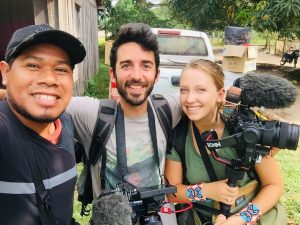
Edivan Guajajara, Rob Groman and Chelsea Greene
RG: It really started from a calling that each of us separately had in the world. We didn’t know each other to start this project, but we met through the process of making it.
CG: We put both of our first trips footage together, and saw that it had so many complementarities and similarities and that we should just make the film together.
HtN: Your co-director Edivan Gajajara is unfortunately not able to speak with us today, but could you share how his involvement in the film created what the film ultimately became?
RG: In 2020 we met Edivan, and he actually grew up in the village with Marçal. This was a really big shift because we needed that kind of indigenous leadership on the team to really bring their story into the fold and to share it in a way that we can’t fully understand or express the way that he understands. He lived it; he lived that fight, he breathed that fight.
CG: Edivan was able to speak in the indigenous language to the communities, because Portuguese is not their first language. So when Edivan spoke with them in Tupi, suddenly the whole world was more possible and they better understood and accepted us being there.
HtN: Edivan was able to provide that “in” for getting to know and filming the Indigenous communities of the Gajajara Tembé people, but how did you get access to and gain the trust of the loggers, especially since they were engaging in illegal activity?
RG: We just went up and told them what we were doing, and asked, “Hey, can we film you and interview you right now?” And Valdir was immediately like, “Yeah, please, film.” Very, very forthcoming. We were surprised by that, but also it kind of felt like Valdir was waiting for somebody to ask him what was going on for him. So I think we were lucky in that way because maybe if it had been another logger, they may have very well been suspicious to the point of not even talking with us, but Valdir was open and wanted to share and wanted to let people know what was going on for them. Because for him, he feels kind of an injustice for what’s happening with the loggers, what’s happening with his people, how they’re taken advantage of, and how they’re kind of like at the bottom of this totem pole, kind of cast aside.
We really wanted to understand what was going on for people on the many sides of the issue. Asking the loggers, “What really is going on in your life, and how do you feel about what’s happening in the Amazon? A big part of what we’re doing is also kind of breaking down this polarization that goes on within these issues and this kind of us-versus-them mentality that is so much of our media landscape.
HtN: It’s clear you have a very strong and lasting relationship with the subjects of your film. How do you respond to beliefs that documentarians, like journalists, should remain impartial and outside of their stories?
RG: We really wanted to bring things to the communities, not just come in and film and leave. What actually can we help? How can we actually help? We wanted to figure out a way that we can actually create a film that has impact and that is also supporting the communities that are in the film. It’s something that unfortunately doesn’t happen as often as I would like to see. There’s a lot of betrayal and a lot of kind of extractive practices in journalism in that way. We wanted to be different.
CG: We’ve been able to raise quite a bit of money for helping the indigenous people in Brazil and do a little bit more support on the ground for the people who really need it. The indigenous forest guardians are the first defense against deforestation, but there’s not enough police force. It’s too large for them to respond effectively and quick enough. So we’ve been able to bring them drones and supplies for missions and trainings.
HTN: Filming a movie can often be a hefty process, in terms of space and equipment. How did you consider the environmental responsibility of bringing materials involved in this process into an area that, as the film depicts, is facing constant invasion?
CG: We were pretty light in terms of equipment. We didn’t want to look very invasive or stand out too much because we knew we were in such a dangerous location. Brazil is the most dangerous country in the world for environmental defenders. Many of them have been assassinated, including one of my friends who’s a journalist, Dom Phillips, just a couple years ago. So we where shooting on a Panasonic Lumix S1H because it’s very powerful, cinema-cam-type quality, but in a little DSLR-looking body.
RG: For low-profile, you can keep it right in front of you and literally be running through the jungle rather than have something bigger on your shoulder. And people were definitely less intimidated by it.
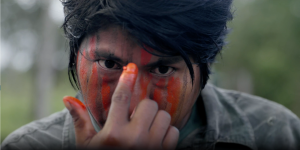
A still from the film
(photo credit Edivan Guajajara)
HtN: What change has occurred since the film was made?
CG: Brazil had been a leader in reducing tropical deforestation in the world. Lula’s government had, from 2004 to 2014, been able to reduce deforestation by 80%. He and Marina Silva made new protected areas; they funded the environmental police force. A lot of things came together to make that 80% happen. But when Bolsonaro came into office and all that was undone: he defunded the environmental police, he went on TV encouraging people to cut new forest. Then when Lula came back, he redid it but there was a lot of pushback – and there’s continuous pushback – by the Congress, which is heavily funded, lobbied by the agricultural industry. For the first year he got into office, there was a reduction of deforestation for sure, but 2024 saw an increase in deforestation again. Last year, fires caused more emissions than all of the aviation industry combined. This is a very dangerous place to be in, because the Amazon should be sequestering carbon. It should be circulating water in the atmosphere, but we’ve deforested more than 20% of it, and so it can’t sustain its own system, especially in the face of how much climate change has increased temperatures and disrupted the rainfall patterns. So regardless of who’s president, we need an international emergency effort to protect the remaining Amazon forest and reforest it as quickly as possible.
RG: We need an international effort in recognizing the companies driving this, through funding the Congress in Brazil, but also, through banks throughout the world that are bankrolling these efforts: Citi, Chase, HSBC, BlackRock. These are banks and investment funds that are creating this disruption, and we need to step up and stand against them, speak out against them. If you have Citi or Chase credit card, stop. Stop carrying that credit card and let them know why you’re not going to be using that credit card anymore. It’s important for us to use our voices and use our tools of social media to send this message far and wide and let the corporations know that that we’re aware of what they’re doing.
Since making the film, the We Are Guardians team donated over $15,000 for The Guajajara Guardians of Zutiwa Village and $10,000 for The Tembé Guardians of Alto Rio Guamá to supply equipment such as drones, uniforms, radios, backpacks, tents, and personal protection equipment to combat forest fires.
– Kaitlyn Hardy


